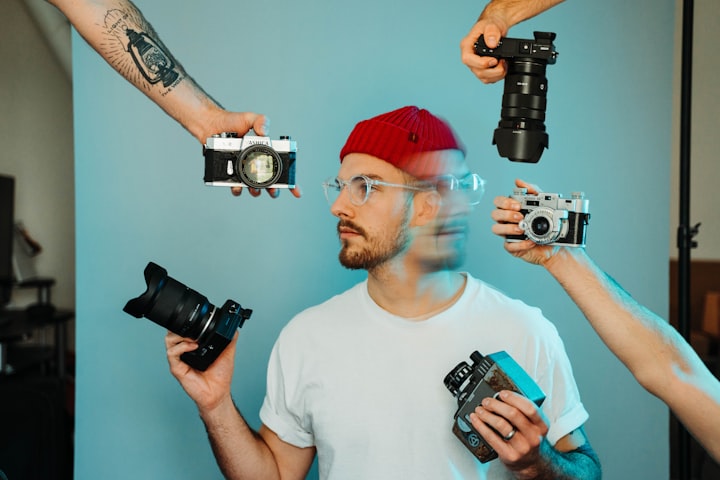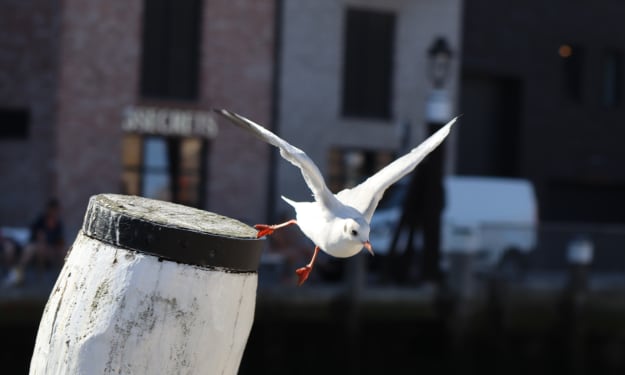Do you have someone, perhaps yourself, who is interested in, or has just begun learning photography? Beginner (or Novice) photographers have some interesting challenges before them. We live in a day and age that has lulled many of us into a comfort zone of “good enough” photographs taken with a device initially designed to facilitate voice conversations across the miles. Beginners, as well as Photography professionals, will often hear people say “I don’t have a camera, I just use my smartphone”, or the even more condescending “Why do you have that camera, just use your phone like I do”. Yes, there are distinct advantages to the cameras in smartphones, they allow anyone anywhere to capture an image or video in a matter of seconds, and for the most part, that photo is either printed on a 2”x3” sticker or typically posted to social media. With proper composition and lighting,at that limited size/resolution, the photo will delight almost anyone who looks at it. So why would anyone invest good money in a camera in 2022? Better yet, why would the big camera brands invest millions of dollars into innovating the latest and greatest sensor technology, going big on Megapixel counts across the board? The answer is not so simple as dollars and cents. Let’s explore some perspectives.
Seasoned (or Professional) photographers will often tout the absolute need to commit oneself to shooting in manual mode, with no assistance from the camera in terms of shutter speed, aperture, and ISO value. There are distinct creative advantages to this perspective, yes…as camera “auto-modes” in 2022 often have their unique recipes for how they treat highlights and shadows which vary from brand to brand. Even the smartphone manufacturers have begun adjusting their algorithms to process colors and exposure differently, so that if you take the same photo with two different brand smartphones, the result after the smartphone has processed the image (usually in milliseconds) will appear different. Perhaps the skin tones will be warmer on one image, or the shadows will be darker, or the reds will be bolder, etc. In the camera world, this is immediately evident in comparing photos between Nikon and Canon. Nikon has historically engineered their sensors/processors to go heavy on the blues and greens in an image, while Canon is unparalleled in their ability to bring the most vibrant reds to any automatically processed photo. While an experienced photographer can adjust their settings to address these values manually, it cannot be overlooked that cameras impose their preferred image characteristics on photos taken in automatic mode, typically identified as Auto, or perhaps a green square on the camera's dial. This particular perspective does not apply to the P-mode also often referred to as Auto by some photographers.

While this is becoming very technical, and perhaps getting over the heads of some people that just want to be told what cameras are good for beginners, it has to be discussed, otherwise people will buy the latest and greatest (and usually cheapest) camera at their nearest big box store and think “this is good enough”. And while they may be right, according to their comfort level and budget, they’re missing out on the finer details. While the auto-modes are great, and if that’s all you photograph in, then your decision will likely be on that unique image processing recipe of each brand’s sensor. Are you a bolder reds photographer, or a greener pastures/trees/seas photographer? That may be your only decision.
I am of the particular opinion that irks most people looking for an easy answer to this question that goes something like “the best camera you can have is the one that’s most easily accessible.” But if you want to look cooler than someone holding a smartphone sideways and pointing it at people or places, then here are some nuggets to consider:
DSLR Cameras

The benefit of a DSLR in 2022 is that there are more buttons on the camera (or there should be). This is helpful to someone who changes aperture and shutter speed and ISO values, or needs to easily change any other setting on the fly. Having the dedicated buttons and switches on the camera body means they can easily do so without fumbling through an advanced and intricate series of menus just to change 1 quick setting for a particularly challenging composition. Some of the best DSLRs today that offer this are as follows:
Nikon D7000 - D7500 series. The D7000 is just as relevant in 2022 as the higher pixel count D7500 in terms of functional use and image production. The sweet spot in this series would probably be the Nikon D7200 as it offers more pro features for a price point right down the middle.
Canon EOS 70D. Anything in this Semi-Pro Canon series before the 70D is getting very long in the tooth, and your beginner will likely need to upgrade sooner because of it. This 70D model is one of those that just works and will continue to work until it either seizes up in the next 50 years, or the photographer needs a specific new technology to meet a specific need. I call this a future-proof camera. The same can be said for the aforementioned Nikon D7200.
There are certainly very capable models on either end of these two suggestions…Canon makes a fantastic Rebel line of entry-level cameras that are great 12 years later (Rebel t2i) as the latest models today (Rebel T7 or T8i). The reason I shy away from the entry-level DSLR’s are due to the lack of manual controls, and without those, the beginner photographer is better off with a mirrorless system, or even their smartphone.
Mirrorless Cameras

Panasonic/Lumix - I would look directly at the Lumix G7 or GX85 for beginners. There are a ton of great models from Panasonic but the G7 and GX85 have seemed to encompass all the best features from all the other models. There are very capable older models like the GF1 and the GH1 even, but in terms of being able to invest inexpensively in a system that will last as long as you need it to, the G7, GX85, and the G85 might be all you ever need. The Lumix and Leica lenses that are made for this system are legendary in terms of size, weight, and their world-class Image Stabilization features.
Sony - The a6000 is a fantastic powerhouse of a camera that at almost 10 years old still packs the biggest bang for the buck. You can find them for around $300 if not cheaper, and the lenses they use, the E-mount (OSS preferably) lenses, are getting increasingly more affordable and standing the test of time.
Nikon or Canon - The mirrorless lines of the Nikon and Canon are still a bit advanced (For beginners, I'd suggest staying away from the Nikon 1 and Canon M series as they're becoming obsolete almost as soon as they are launched.) Canon’s strongest contender perhaps, the M5 is the best of the bunch, but Nikon hasn’t really cemented themselves in this market at least in terms of affordable first-time cameras. That being said, if you have an unlimited budget and want one camera today that you’ll likely never need to upgrade from, go straight to the powerhouse NIKON Z9. That’s just the best all-around right now in terms of capability.
Those are the best options in 2022 for beginning photographers who are studying photography whether in school (where they may require a DSLR) or on their own, in terms of the biggest value. Going too cheap may restrict your growth potential, and you’ll be at risk of getting burned out easily with too many annoyances/obstacles. Investing the $300-$1000 in a system mentioned above will get you started right and allow you to upgrade lenses while maintaining a great camera body/sensor/processor along the way.
Future Considerations
Once you get the feel for the camera and once you know the camera intuitively then you can start branching out and trying other systems for fun and maybe even find they are more to your liking. But first go with the most affordable stress-free option to start, so you can fan the flames of your passion for photography and grow sensibly from there. People get caught up in the social media hype around feeling like they constantly need the latest and greatest, but they really don’t. As much as I hated hearing that in my early days, I actually agree now. If you care about creating great images, capturing powerful scenes, and/or moments in time, and you’re fascinated by the idea of building your own camera system and having fun exploring what different things you can do to make the image uniquely your own, then get going on building that kit with any of the options above. If you don’t necessarily care about the imagery or elements of a scene, and just want to share cool things you see with your friends and family on social media, then stick with your smartphone for the best snapshots you can get.
Beware of Analysis Paralysis
Don’t let the idea of waiting for the right equipment or the right amount of money to get the equipment you think you need, stop you from capturing your perspective of the world around you. The world needs as many diverse perspectives as we can get, so get out there, capture what your eyes and heart connect with, and share that amazingness with the world. Even if it’s a cool way that a weed is growing into a chain link fence…that juxtaposition that catches your eye was meant to spark your interest, perhaps it was also meant to share with someone who needs to see that simplicity today. Don’t ever let overthinking stop you from sharing your perspective with the world. Click that shutter like you mean it! Happy Clicking! Have fun out there! Share what YOU love, not what you think people might like. With consistent content that is genuinely you, your tribe will emerge!
If you have some ideas of your favorite cameras, perhaps the one that got you started, please share them in the comments. Please be respectful of the platform and the likely reader of this article that they may not be as knowledgeable or as advanced as you, and that’s ok. If you have any further questions about beginning your journey in photography please also share those in the comments. I believe in the concept of learning taking a village, and this is that village for us. Let’s help each other discover and/or celebrate our greatness.
About the Creator
Scott D.
A modern day Multi-Passionate creative with my finger on the pulse of the world of Photography/Videography, and occasionally society in general.







Comments
There are no comments for this story
Be the first to respond and start the conversation.